Make Yourself Heard
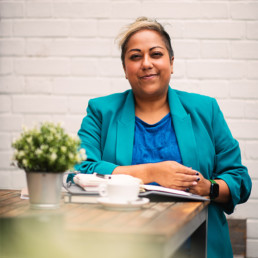
Written by Bennie Kara
Co-Founder of Diverse Educators
Public speaking is a fact of life in the teaching profession. We speak to students all the time in classrooms, but every so often, we are called to deliver assemblies, or to deliver training to staff, or to speak to governors. Some of us are supremely confident in talking in front of students, but shudder at the thought of talking to a group of adults. If you’ve ever felt a sense of dread when you are asked to stand up and deliver spoken content outside of the classroom, you’re not alone. According to the British Council, 75% of us suffer from anxiety about talking in front of a crowd.
Speaking in front of the crowd may tap into a range of fears. We might fear being nervous and how that might affect our assignment. We might fear judgement, or fear that we won’t get everything across that we want to say. We might fear that people won’t listen. We might fear forgetting what we are saying in the moment, stumbling, freezing, feeling embarrassed. These are valid fears and affect most of us.
Whose voices are valued in the public space? Some people are less confident in their speaking abilities because their voices have been silenced. In the UK, global majority teachers work in a predominantly white British teaching workforce; we know the statistics on the ethnic make-up of leadership teams in education. Global majority teachers may suffer from the voicelessness that is part and parcel of existing in marginalised groups. This isn’t just true in terms of race and ethnicity; it is also true for sexuality, gender, disability, and neurodiversity.
Voicelessness erodes confidence. So it is hugely important that we learn how to find a voice in the public space and to feel like we belong there.
Finding your message
Regardless of the occasion, it is important to define the message. Speaking in a staff meeting, delivering a talk to parents – what is it that we want to get across? Not just in terms of the information, but also about you. How are you defining your leadership in the moment through what you say and how you say it?
The message might be small, or it might be momentous. In either case, we need to find ways to define a sense of who we are as engaging speakers and to ensure that we can convey our message effectively. This takes thought, planning, and crucially, constructive practice.
The best public speakers have elements in common. One of the most powerful tools in public speaking is your ability to tell a story. Storytelling is vital in public speaking, in the appropriate contexts. An assembly without a story, a keynote without anecdote can feel dry and impersonal. The most skilled public speakers I have encountered know how to weave a story into the talk with a deftness and ease that seems intuitive.
But storytelling is not intuitive for all. Some people are completely comfortable in selecting anecdotes, examples, stories, tiny useful narratives for the public engagement. Others have to think more carefully, but that careful process can lead to brilliant, engaging public speaking.
The Diverse Educators ‘Make Yourself Heard’ Course
Designing this course, for us, means that we can support you in developing the right mindset for public speaking and provide you with practical strategies to make yourself heard. It aims to develop a voice with you in small groups so that you have the chance to listen, learn, practise and hear feedback.
If you would like support in developing your voice, join us on the ‘Making Yourself Heard’ course using the details below:
Monday 15th January and Monday 11th March 4-5pm
Part 1 – Monday 15th January 2024 4.00-5.00pm
The first session is an intensive look at how you can plan, develop and deliver talk in public so that you can create impactful messages.
Part 2 – Monday 11th March 2024 4.00-5.00pm
This second session aims to support you in considering how to speak impactfully in public. It will cover planning, rehearsal and delivery style in a safe, supportive space with fellow educators.
Nb/ Both sessions will be held on zoom, they will be recorded so purchasing the recording is also an option if you are unable to make either of the dates.
Supporting Parental Engagement for EAL Students
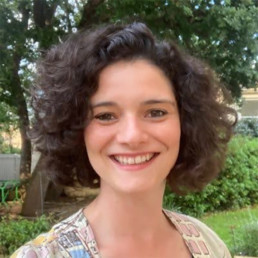
Written by Emma Sheppard
Emma founded The MTPT Project, the UK's charity for parent teachers, in 2016 when on maternity leave with her first child. She has 12 years experience as an English teacher, Lead Practitioner and ITT Lead, and now runs The MTPT Project full time.
I’m now into my third year of immigrant living, having relocated to France with my family in 2021, and – amongst all the other rather enormous changes – one of the most insightful experiences has been navigating the French education system with two children now in infant and primary school.
For context, our move to France marked the first time in twelve years that I hadn’t started September as a teacher. As a consequence, it was also the first time as a mother that I had been responsible for all the school runs, dropping my children off at their class, rather than breakfast club or handing over from an after school nanny. My children are bilingual, thanks to my French husband, and my French is competent, but – oh my! – have I felt the panicked feeling of perpetual confusion, catch up and miscommunication over the last two years!
Of course, having previously worked in schools with a high percentage of EAL, bilingual and multi-lingual students, and even managed our EAL department, it has been fascinating to be on the “other side”. But this insight has pertained, not to my children’s experience (indeed, my daughter is arguably more comfortable in French than in English), but to how we can support the parents in our communities who may not be fluent English.
Here’s what’s been really helpful for me, as the “F(French)AL” parent at the school gate…
Information Evenings
A short information evening early on in the term where parents get the chance to see their children’s classroom, leaf through their books, visually take in which book is the planner, which is for reading, what homework might look like etc., is a great starting point. It provides the opportunity for parents to demonstrate their level of English, and for teachers to take note of any families that might need additional support in clarity of communication. It also introduces parents to each other so that families speaking the same language can find each other and build community, or get added to the class WhatsApp group so they don’t miss out on important reminders or get togethers.
I make a point of speaking up at these meetings, and talking to the teacher afterwards so that they can really hear the extent of my clumsiness in French, but some parents might not feel comfortable doing this. Quietly engaging with parents as they come in, or leave the meeting with more than a “hello”, “good bye” can be a good way for teachers to get a better idea of how much English our families have.
Asking all parents in these meetings, their preferred means of communication – email, telephone, in-person, notes in planners – is a sensible way to secure clarity of communication from the start. Some parents may be able to speak and understand English confidently, but their literacy skills may be weaker. Some parents may be adept at using Google translate and balk at telephone conversations. Equally, for our native or fluent English speakers, email may be far preferable in a busy working day, to the interruption of a telephone call.
At the School Gate
The relaxed, conversational moments at the school gate are a great opportunity to show with smiles and gestures that students have had a great day, or to point out an important piece of information in a letter going home, or even to tackle challenges. This might be normal practice at primary level, but is particularly helpful for parents without much English who may otherwise have no means of knowing how school is going.
The hovering time afforded to me by the physical presence of teaching and support staff at the gate of my children’s first school meant that I was able to get to grips with how school lunches worked, wraparound care, strike days, when to bring in packed lunches, what on earth the system of cover teachers was in France. Remember that different countries have hugely different approaches to all aspects of education, and ways of doing things outside the classroom might be completely alien to some of our families – they were to me!
At secondary level, it might be trickier, especially beyond KS3 where students are more independent, but knowing which parents do collect their students, and swapping in a gate duty once in a while is a great opportunity for relationship building.
Inclusive Homework
Never have I had such thorough French lessons as when my son started CP, the equivalent of Year 2 when children learn to read in France. Every evening, he was required to read through syllables and increasingly complex passages from his Taoki text book. My pronunciation, vocabulary and understanding of French linguistics improved immeasurably over this year, even if I still can’t differentiate between the different ‘oo’ sounds. I now have two miniature teachers, as well as the shadow of their teachers to support my progress in French.
Homework activities – and resourcing these effectively – that allow parents to learn alongside their children, even if they are doing this surreptitiously rather than pro-actively, are a great way to boost parents’ own language skills.
Celebrate Home Languages
Yes, yes, I’m an English teacher and will leap at any chance to read a story and perform in front of an audience, but the jokes from parents and teachers about helping them to improve their English have resulted in a termly story-time slot for three year groups in my children’s current school.
As English speakers, we’re in the privileged position of speaking the global language of business, and as such, English is a valued language in most countries. Unfortunately though, this means that we look down – as a general culture – on other languages or consider them irrelevant.
This contempt is interlaced with prejudice, and I’ve definitely been on the receiving end of light-hearted mockery or messaging coming through my children and their friends, that indicates that these attitudes are also present in France. It creates tension, wariness and defensiveness and I’m incredibly conscious of the parents and teachers who make room for me, and are generous with my language – allowing me to make mistakes and feeding me vocabulary when I stumble – and those who look at me with fear or discomfort when I begin talking.
Story time has provided an opportunity to celebrate English – I deliver with props and songs and emphasis, and follow-up worksheets – and the children love it and share this enthusiasm with their families. Not all parents will be interested or available for a set up like this, but events like World Book Day, a Home Cultures or International Day, are great opportunities to invite primary school parents to come in and tell a story in their home language. At secondary level, this could take the form of a drop down day or afternoon where parents, students and teachers set up a national market place stall of treats, games and language challenges for students to explore.
Offering community languages as an optional GCSE is also a hugely important signal that other languages are valued in your school. Parents need to be informed of how their can support their children with this extra-curricular commitment, and the importance of speaking, reading and writing the home language. Some parents might even be interested in supporting with language clubs, additional tuition, mock paper marking, or speaking exams.
Most importantly, remember that language limitations don’t make parents lesser, and it is definitely not our role as teachers to dictate how much English our students’ parents should speak, or the languages that should be spoken at home. Bilingualism and multilingualism are a gift, and “Time and Place” bilingualism – where specific locations (e.g. home and school) – are delineated for one or other language is a tried and proven method for building native fluency in more than one language.
Parents’ English may improve over time, or they may be very content with the level of language they have. This may be particularly true if they have secondary aged children and school is the only reason they need to understand or use their English. With small adjustments – many of which are attitudinal – we can embrace the parents of our EAL students and facilitate inclusive environments where they can engage with their children’s education in a way that feels appropriate to them.
Woke, but not too woke?
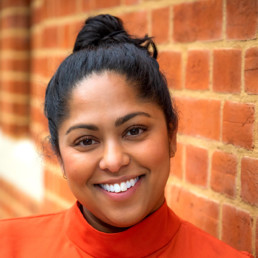
Written by Bilkis Miah
Bilkis brings a powerful perspective to the table, shaped by her upbringing as a British-Bangladeshi immigrant. With experience in both management consulting and the education sector, she offers a rare blend of expertise and cultural insight. Her unwavering commitment to breaking down barriers and challenging norms has positioned her as a powerful voice for change. Bilkis is not just a thought leader, but a driving force for positive impact, inspiring and empowering communities everywhere to re-imagine what is possible.
Inclusivity, or ‘wokeness’ as it’s come to be known, isn’t political correctness gone mad, it’s an essential move for our children.
To see how ‘wokeness’ is perceived in education, you only have to open the newspaper to see that Robert Halfon, Chair of the Education Select Committee, condemned the use of the term ‘white privilege’ last year. Halfon claimed – and this is as much as I can agree on – that there is an ‘opposite reality [to privilege] for the white working class across society’.
But surely this is a question of semantics? Isn’t it more important to make sure we’re not entering a class war, and pitting one group against another? Using terms like ‘white privilege’ isn’t the reason why so many white working-class children are failing. It’s a systemic problem, including underfunded schools, economic inequality, and the lack of opportunities for social mobility.
Understanding communities
So, what’s even more important is that we come up with initiatives and programmes that help future generations. For this to work, it’s important to listen to the community, such as teachers and parents, but also to ask children what they need. We need to understand the context that is breeding such inequalities, and let communities know that their voices are being heard. We’re all complex and layered humans, and there are nuances to navigate. For example, in Tower Hamlets where we’re based, there is a majority British-Bangladeshi and white working-class population. Things like living in an intergenerational home, or having parents who have little or no formal education are real issues that our children have to deal with. When we asked parents what they were worried about, it was the same common theme – they were worried about losing their children to a world they didn’t understand.
But there needs to be impact on beliefs and understanding the community has over these issues. It has to reach communities beyond the school gates, it can’t just be up to teachers. This is where we saw an opportunity to take parents and carers from all backgrounds on a journey to clearer awareness; one that helps communities understand what we mean by diversity and inclusion and to have the tools they need when they come across it in their lives. We do through our home activity kits. The kits encourage families and children to think and learn about themselves and the world around them through fun, paper-based activities. Importantly it doesn’t centre around having digital access – digital poverty in our community is a real obstacle – rather, the focus is on spending quality bonding time away from the screen through activities like journaling, reading and art to name but a few.
Real-world wokeness
Last year we saw St Paul’s Girls School renaming their ‘head girl’ position to ‘head of school’. This may seem like a superficial change, but the reasons behind it are key. And no, this isn’t ‘political correctness gone mad’. It’s really important that we don’t define our pupils by gender, race, religion, sexuality, class or ability. All the stereotypes that come with these narrow categorisations have wider societal implications. By changing the title from ‘head girl’ to ‘head of school’, staff are saying to their pupils, ‘We recognise you, and you can achieve anything regardless of your gender’. It’s not boxing girls into certain roles, or qualifying success with terms like ‘girl boss’ – you’re a boss, period. This is so important when we think about a healthy, diverse workforce for the future. Even in our pilot project, we’ve heard comments from children such as “Boys will have more important jobs as they have bigger brains.” Statements like these may seem inane, but it’s essential to dismantle them as soon as you notice them, so they don’t have the opportunity to entrench further.
Importantly, when you’re talking about making sure to teach about stereotypes at school, and embedding this into school policy, make sure to take families on the journey with you. It never ceases to amaze me how many schools don’t necessarily ask parents the tough questions: ‘What worries you?’, ‘What are your main concerns around teaching about stereotypes?’. Not only does this let families feel heard, but it allows you as the teacher to understand their concerns, and have the opportunity to allay some of those fears. More often than not, parents want the same as you – for their children to have all options open to them.
‘I’m so glad we have one of you here!’
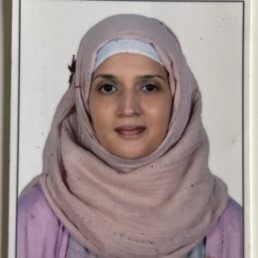
Written by Nabiha Mohamed
I am a British born Muslim Pakistani Geography teacher, who loves rocks and the Marvel Universe. I have spent 13 years living in Abu Dhabi but have now returned to the UK and am living in Bristol. I have taught in both comprehensive and independent schools, both of which I have enjoyed very much. I am a creative being who overthinks everything! I love to learn, and I have recently woken up to the fact that I am one of the few teachers of colour in this country and am now feeling the responsibility of this weighing heavy on my shoulders. Keen to ‘make a difference’ in the schools, I would love to connect with other teachers of colour in the UK.
We have been hit with comments like these throughout our lives. We have become accustomed to these ‘microaggressions’ in every aspect of our daily routines, and by ‘we’, I mean, people of colour.
As a British Asian Muslim woman (that’s a lot of labels already) born and raised in this country, I had never heard of the term ‘microaggressions’, until about 2 years ago in a CPD session at school. It was a turning point for me, in my career and my personal life. I have since been educating myself around the topics of unconscious bias, microaggressions and sense of belonging, particularly in schools. It’s been a rollercoaster ride since then, highs and lows in my teaching career, in my understanding of the issue and trying to work out how best to teach students to be assertive and staff to be ‘awake’. I am no professor in this area, I am not perfect, but I have grown to become passionate about this topic as one I can relate to and hopefully, an area I can help change in schools.
I have come to realise that many people who fire microaggressions at you, are often wonderful, kind, well-meaning people. They just don’t think about the gravity of their words; if you did have the courage to call them out on their inappropriate comments, they would be utterly devastated, which also makes us hold back on speaking up. Three recent examples I can think of (all said by adults):
- I can never learn the names of the girls who wear hijabs, they all look the same.
- I’m so glad we have one of you here now at school, the kids really needed someone like you.
- I loved culture day; it was my favourite day of the year! I loved all the costumes students wore; they were beautiful.
Costumes? I don’t wear my salwar kameez on Halloween, love.
I have delivered CPD sessions and assemblies on Unconscious Bias and Microaggressions to both staff and students recently, with the aim to give students of colour the confidence to speak up and say, ‘that’s not okay’ and to educate teachers on what many of their students go through daily as they go about their lives.
The thing is… I said in my assembly that I promised myself, whenever anyone was to say anything inappropriate directed at me, I would speak up and tell them. If ‘we don’t do this’, I said, ‘things will never change.’ Did I speak up when the above microaggressions came my way? Shamefully, no I did not. WHY, oh WHY did I not say anything?! Because, they were all lovely people who didn’t mean any harm. Because I, aged 47, did not know how to handle the situation at that exact moment, and if I couldn’t, how could I expect a child to?
However, I want to break the cycle. I want to have the confidence to say ‘errmmm, no’, and I want to teach students to be able to do the same in a respectful way, but I don’t know how to. We have school policies on explicit racism but there is nothing in means of reporting the implicit microaggressions from students or staff. Should there be? Is there a need? Do we ask our EDI Leader to speak to the guilty ones or should we have the guts to do it ourselves? But the interesting, or annoying thing amongst these questions in my head is, why am I struggling to speak up like I am the guilty one? I haven’t done anything wrong.
The Misuse of Gender

Written by Katy Carpenter
Katy is a Pastoral Lead and EDI Lead in a Birmingham primary school. She is currently studying for her PhD in Education, researching how children explore and negotiate gender through creative writing.
Graham et al (2017) wrote that gender is typically constructed within a binary of two natural biological entities – man and woman. As such, it is very easy to conclude that gender is inherently linked to one’s sex. Even a modern understanding of gender as a social construction and a form of expression finds itself difficult to detach itself, semantically, and conceptually, from one’s being male or female. The language around gender remains restricted to a range of words pertaining to masculinity and femininity, a binary mode of thinking which reduces our positioning of people who deviate from the gender norm as either masculine women or feminine men. It seems that without this binary, we would find it very difficult to understand gender-diverse people.
How have we gotten here, why is this the case, and need it be? Our historical, social and cultural norms have made it so that gender appears to be indistinguishably linked to sex, and historically, sex and gender have been treated as synonymous in law and culture (Case, 1995). Even contemporary culture continues to conflate sex and gender. On an application form I will often be asked to identify my gender, and drop-down options usually are a choice of male, female, non-binary, or prefer not to say. Now if what HR wanted to know was how I express myself, they could change these options to masculine, feminine (due to where we are in history these terms are still helpful in denoting a style or aesthetic), non-binary, prefer not to say, and in addition they might even add a few other options like flamboyant, assertive, glamorous. Of course, this would be limitless and unmanageable. It also wouldn’t be very useful to HR because when this question is being asked, what they actually want to know is my sex assigned at birth, or indeed, whether I don’t find this label relevant to my ability to do the job, in which case I might opt for non-binary or even the as question-raising option, prefer not to say.
The conflation of sex and gender is problematic. When we use the terms interchangeably, people end up confused. I treat gender as a social construct, historically derivative of the male/ female sex binary but actually conceptually distinct from it. A popular view of gender is one of whether you’re male (a biological occurrence), female (a biological occurrence), or reject those biological categories (a social occurrence). The drop-down boxes on application forms suggest that this is also an institutional view of gender. However, an important distinction between sex (meaning one’s sex assigned at birth) and gender (meaning one’s expression- which has both personal and political motivations) needs to be upheld, else we need not have two terms at all. A semantic and thus conceptual conflation of sex and gender subsequently leads to a confusion of the debate around matters pertaining to gender. Indeed, one of the outcomes of this conflation is that when I talk about gender with my friends and colleagues, I am taken to be discussing transgender matters. Channel 4’s Gender Wars, which aired earlier this summer, looked promising in bringing discussion about gender to a wider audience than academics and people leading EDI work, however in focusing on the debate around the trans community, it unfortunately upheld the impression that all debates around gender are debates around trans issues. The gender discussion is much wider than this, and there is a difference between the matter of being transgender and the critical questioning of the boundaries of gender presentation.
In relying on a binary between masculinity and femininity when developing a framework for conceptualising gender, even those who accept and embrace gender fluidity are restricted to this idea of two ends of a linear spectrum and everything else in-between. I suggest a different way of picturing gender (because let’s face it, things that come with a picture are always easier to understand). I suggest an egg, where male, female and intersex people reside centrally in the yolk, and the white circle around the outside is the space of gender – how one expresses oneself. By removing the image of the line, one form of gender presentation is no nearer to or further from any one sex than it is another, and thus releases itself from the binary of masculine and feminine forms of presentation.
In her 1990 book Gender Trouble, Judith Butler controversially questioned the category of woman. This was contentious because it destabilised ‘woman’ as a protected and distinguished category, with fundamental difference to men, something centuries of feminist work unwittingly embedded. This idea set ablaze the acknowledging of gender (in a feminist context, the doing of womanhood) as a process of construction – gender as a doing rather than a being, separate from sex. This was called gender performativity. With this different understanding came the possibility of a critical evolution around identity and performance. There is much yet to be explored.
References
Butler, J (1990) Gender Trouble. Feminism and the Subversion of Identity. Routledge, New York.
Case, M. A., (1995) Disaggregating gender from sex and sexual orientation: The effeminate man in the law and feminist jurisprudence. Yale Law Journal, pp.1-105.
Channel 4 (2023) Gender Wars.
Graham, K., Treharne, G.J. and Nairn, K. (2017) Using Foucault’s theory of disciplinary power to critically examine the construction of gender in secondary schools. Social and Personality Psychology Compass, 11(2).
Languages in the Community
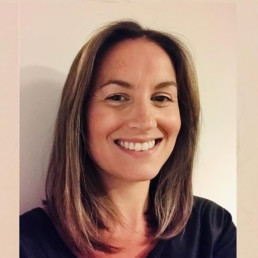
Written by Mair Bull
Former teacher and content writer for BBC Bitesize. Now works at Manchester Metropolitan University in the Curriculum and Rise teams.
Recently, we launched our first flexible learning Short Course, a trailblazing Office for Students pilot, part of the Government’s lifelong learning and upskilling agendas. We started with the unit ‘Languages in the Community’. We have a fantastic first group who really enjoyed learning about the course structure and being introduced to Urdu. Each week we will explore another of Greater Manchester’s most popular languages and learn more about the city and our community. In addition, the unit explores how we communicate (using both verbal and non-verbal forms) and create inclusive and welcoming spaces, no matter the level of spoken English.
This innovative pilot enables students to study flexibly and from 2025 to ‘stack’ their courses to build up to a full degree. We have started initially with Level 4 and students can ‘stack’ to achieve a Certificate of Higher Education (equivalent to first year of a degree).
Initially, our Short Courses are aimed at those working or volunteering in education, health and social care. Most students in the pilot do not have degrees and so this new and exciting opportunity offers them a chance to gain a qualification whilst still working in roles such as classroom assistants, nursery staff, childminders and social care associates. However, the flexibility of the structure means the courses have also attracted those with degrees, such as teachers, using the courses as part of on-going CPD, especially as they recognise the importance of staying up to date following the significant impact of Covid-19 on young people and families.
The Short Courses have been developed each step of the way with equality, diversity and inclusion at the core. Initially, we hired independent consultants from Diverse History UK, as part of our quality assurance review panel to scrutinise our inclusion curriculum planning.
The courses aim to role-model the best in flexible, inclusive and innovative practice. We want these courses to inspire and empower students, building that bridge between their previous experiences and these new level 4 opportunities. Our structure means that students come together in-person weekly for workshops, plus additional asynchronous online activities, which students work through independently at a time that suits them. There are no essays or exams, instead the assessments are authentic and can be applied directly to the students’ own setting.
Key to the success of the Short Courses is the importance of creating a welcoming community, where students from all backgrounds and experiences feel they belong and can enjoy sharing the learning journey with others.
The potential of the Short Courses model has really captured the attention of the sector and beyond, and we are exploring opportunities with our engineering employer partners creating a CAD (Computer Aided Design) and 3D printing course, with our award-winning Print City team. In addition, we are bringing on new units all the time, including Speech, Language and Communication; Mental Health and Wellbeing; plus Risk and Safeguarding.
To find out more visit: www.mmu.ac.uk/study/short-courses
Addressing the Legacy of Section 28 & Supporting Diverse Families

Written by Troy Jenkinson
Equality, Diversity & Inclusion Specialist, children’s author, public speaker and former Primary Headteacher and Executive Headteacher. https://troyjenkinson.com/
Today, more than ever, we should strive for equality in our schools. Seeing how LGBTQ+ culture has been embraced in colourful Pride events and the peppering of queer characters in the media, you could be forgiven for thinking we had turned a corner in equality. We have come a long way, triumphing over the Section 28 policy (the 1988 amendment to the UK Educational Bill silencing queer teachers) and the partial decriminalisation of homosexuality. We have fought hard for rights to marry, adopt and live our lives showing our “True Colors” to quote Cyndi Lauper.
Digging deeper, you realise how far we still need to go. The ILGA (2020) reports 70 countries still criminalise homosexuality; 6 punishable by death, 57 with lengthy prison sentences. Only 68 countries offer broad protection for their LGBTQ+ population. High profile media events point to continued educational need. Florida’s “Don’t Say Gay” Bill (March 2022) mirror’s Thatcher’s vindictive 1988 Section 28. We have not learned. Cripplingly unfair acts such as harsh laws to imprison LGBTQ+ people for life in Uganda reported by the BBC in March 2023 marginalise our community.
The UK once topped the ILGA table of European countries for LGBTQ rights (2015), but slumped 14 places by 2022, accredited to governmental failures and its abandonment of its promise on gender recognition and equality plans. The statistics speak for themselves. Galop (2021) reported “LGBT+ hate crime is disproportionately on the rise in the UK.” Two thirds of LGBTQ+ people experienced homophobic violence or abuse. This likelihood only increases for ethnic minority and trans people.
The question we have to ask ourselves is; why?
Bullying is borne from ignorance. Section 28 has long-lasting effects on our educational establishments. Stonewall reports LGBTQ+ students are twice as likely to have been bullied than their non-queer compatriots (42% compared to 21%). Teachers echo this; 85% of secondary and 45% of primary staff acknowledge homophobic bullying in their schools.
With less than half of LGBTQ+ students (48%) experiencing positive messaging to support them, it is high time we as educationalists did something about it. The government introduced Relationships and Sex Education Guidance (2019) but left it open to interpretation stating:
“Schools should ensure that all of their teaching is sensitive and age appropriate in approach and content. At the point at which schools consider it appropriate to teach their pupils about LGBT, they should ensure that this content is fully integrated into their programmes of study for this area of the curriculum rather than delivered as a standalone unit or lesson. Schools are free to determine how they do this, and we expect all pupils to have been taught LGBT content at a timely point as part of this area of the curriculum.” (DfE, 2019)
Robert Long (2023), concludes schools are still not required to “promote” same-sex marriage:
“Governors, teachers and non-teaching staff in schools, parents and pupils, are free to hold their own religious or philosophical beliefs about marriage of same sex couples.” (Long, 2023)
Schools need help to sensitively support all pupils and tackle the endemic victimisation. They need to address inequality and inclusion in their curriculum and how they support diverse families. There is little guidance for parents themselves.
From my own experience of coming out, my parents found it traumatic; relating it to grieving as they tackled a myriad of questions, hyped by media negativity:
- Would I grow up happy and fulfilled?
- Would I be bullied?
- Would I die of a terrible disease?
- Would they have grandchildren?
Though this was in the 2000s, it is still a very real issue for some individuals today.
Recently, I worked with international colleges supporting staff and students from countries with poor human rights for LGBTQ+ citizens. I became fascinated by the term “Straight Privilege.” Those not identifying as LGBTQ+ do not have to come out, or seek out role models in the public eye. It is an interesting concept to explore.
As a headteacher, influenced by Andrew Moffatt, I introduced weekly “No Outsiders Assemblies.” Using news images, I positively identified people who stood up for their rights or succeeded despite potential marginalisation. This ranged from Malorie Blackman’s interpretation of historical figure, Rosa Parks for Doctor Who and Jacinda Ardern’s maternity arrangements as New Zealand’s Prime Minister, to discussing the controversies of a gay kiss at the 2018 Winter Olympics.
Working with a family whose children experienced bullying for having same sex parents, inspired me to publish my first children’s book “The Best Mummy Snails in the Whole Wide World.” Since, I have delivered countless assemblies, workshops and key notes speeches aimed at fighting the corner and being the role-model, I never had in school.
What Does it Mean to Belong?

Written by Hannah Wilson
Founder of Diverse Educators
Some people think that framing DEI work under belonging softens it and dilutes it, whilst I do understand this critique, I personally believe that belonging is the door-opener to the conversations about DEI, it is the way-in for many to enter the space.
Belonging to me is being seen, being heard, being valued, being safe. Belonging is not about fitting in but about being accepted, loved and respected for who we are. When we belong, we feel included, we feel connected and we can flourish as we can be ourselves without fear of judgment. We belong when noone makes us feel like an outsider, noone others us. We belong when we are celebrated, not tolerated.
I always start my training session with any stakeholder group by exploring the language and unpacking the acronyms that can inhibit the work. I share the linguistic/ acronym journey of DI (Diversity and Inclusion) becoming EDI (Equality, Diversity and Inclusion) and iterating into DEI (Diversity, Equity and Inclusion). With the J for Social Justice appearing with some saying DEIJ and others saying JEDI. Noticeably, the addition of the B has been a more recent trend in the last 3 years.
Belonging appeared in our consciousness and in our vocabulary in the wake of George Floyd’s murder. As we saw corporate commitments to doing the work, I observed a trend on LinkedIn. People in my network who were Heads of DI/ EDI/ DEI were becoming Heads of Belonging. A subtle shift in language which reframed their role. Their remit was to be responsible for levels of belonging in their organisation and to use this lens to scrutinise policies, processes and practices.
I started sharing this observation with the school people I was training and it always resonated – show me an educator who would answer No to the question: Do you want all of your learners to belong in your classroom/ school? In some ways it is a bit of a trick question when you then follow up with more probing questions about belonging in the curriculum and in the library. They have already said Yes so how do they now do a U-turn and say No?
I began to extend the questioning to the adult experience: Which adults belong in your school? Which parents belong in your playground? Who belongs in our education system? Each question was a provocation to invite some reflection and discussion, to shift people out of their own bubbles and to exercise some awareness and some empathy for others.
Using my coaching skills to create a safe space, to take people beyond their comfort levels and to increase their consciousness is a facilitation strategy I am constantly refining. A safe space means that we can be courageous and that we can challenge one another but that we do it in a mindful way. The wheel of power of privilege exercise I regularly use is a tool that can create high levels of discomfort but it is a great way to unpack the ‘perception gap’ and emphasise why some people might have a greater sense of belonging than others.
Linking the census data for the country to the workforce census for our profession to attrition data for the sector to hate crime data in society to staff and student survey data, is another way to increase awareness of who belongs and why this might be. As an English teacher I use the data to tell the story of a space and I ask the question: What story is the data telling us about who belongs here?
So when I am delivering keynotes and workshops on Creating a Culture of Belonging, with the acute awareness that I am a cis-het, white, able-bodied woman who is facilitating the conversation, I am not letting people off of the hook, but I am instead creating a container for some radical candor. I am holding up the mirror to myself and to others to recognise that we might have taken our own sense of belonging for granted and that we might assume that others feel/ experience our spaces in the same way as we do, when the reality is that there are gaps which can quickly become gulfs.
I remind people in our training sessions that belonging and love are at the centre of Maslow’s hierarchy of needs. Noone can progress to the upper tiers of esteem or self-actualisation without a sense of connection. More importantly it is also a reminder that we do not belong if our physiological and safety needs are not being met. A stark example of this is found in the Just Like Us 2021 Report – Growing Up LGBTQ+ published as we came out of lockdown.
Belonging is the goal of our DEI work. Belonging is also the outcome of our DEI work. Belonging surveys can be helpful as they baseline how people are currently feeling about their experience – we can baseline and benchmark belonging by role, by group, by identity and listen to/ learn from what we are being told. Belonging is not fluffy, when used intentionally, it instead creates insight from the different portals it opens up for us to explore.
For example, women between 30-39 who are parents/ carers and who are seeking flexible working vote with their feet and leave our sector in droves each year. How can we create more family-friendly schools to create a greater sense of belonging for that group of professionals?
For example, mixed race is the fasting growing racial identity in primary school pupils nationally. How can we recruit and retain more teachers of colour who represent the communities that we serve? How does having increased role models in the staff increase the levels of belonging for our pupils?
A culture of belonging is one where we are courageous and curious, one where we are open to challenge and committed to change. It is one where we ask searching questions and where we listen to the often hard truths that are revealed.
So as everyone jumps on the ‘Belonging Bandwagon’ and it becomes the newest buzz word at edu-events, can we make sure we are not skirting around DEI issues but getting to the heart of the matter? And when we are talking about belonging at events and in our schools can we be more aware of who is in the room, of who is talking, of who is listening and what that also tells us about the sense of belonging or the lack of?
Reducing barriers to inclusion by casting a wide net
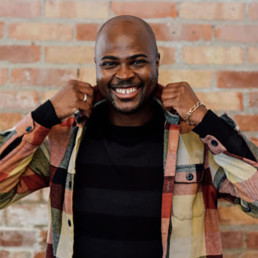
Written by Mahlon Evans-Sinclair
Mahlon Evans-Sinclair is an experienced educator with extensive participation in the fields of learning, professional & personal development, and EDI (Equity, Diversity and Inclusion).
Recently, I updated some guidance on the ‘use of pronouns’ as part of a wider report writing set of guidelines.
From the outset, I’ll say that I didn’t like the singular focus being placed on pronouns. Given that it’s an agitator for many, it felt like it was getting in the way of a wider message about how to write for a document that’s official in nature, but also personal in content. Additionally, the wording gave off a ‘need to know’ basis about any change/accommodation needed for the child in this regard. The twin issues for me in this are that (1) at a school-wide level, it requires the ‘push for assistance’ button to be pressed before ‘support’ can be given and (2) it can lead to a reactive ‘when prompted to’ attitude from teaching staff, with relation to promoting good practice of inclusion as default across the board.
So I changed the wording from a focus on pronouns to a wider acknowledgement to ‘Inclusive Language’ and in doing so, I added the following points:
- Inclusive language is affirming of all students, regardless of identity marker. (It reduces anxiety and barriers associated with identity presentation and supports feeling respected, understood and represented).
- [With regards to gender] Use of gendered terms are perfectly appropriate in many contexts (such as report writing) and don’t need to be consistently avoided, however consideration to use inclusive terms is encouraged across all interactions with students.
- Where a request has been made by both student and parent/guardian to use only the student’s name or [different] pronoun, [this will be communicated] directly.
In updating the guidance, there were a few things I wanted to contextualise, so separate from the document I gave further framing:
- Firstly, we should be working to reduce any barrier of inclusion related to accessing the feeling of being part of/belonging in a space.
- Thinking about it from the famously used and adapted ‘equality/equity’ image, we should be working to remove the fence completely (inclusion/liberation), rather than suggesting that we will treat everyone equally unless there has been a request made by the person facing the greatest barrier for an equitable ‘accommodation’.
- Furthermore, it’s understood that it’s not the responsibility of the person facing the oppression to educate others about it, so if we were to take that into account in this case, being inclusive in our language from the start takes the burden off of students having to ‘out’ themselves in highly visible and potentially unsafe way to feel validated in their identity.
- Finally, (in this case), moving the conversation away from being specifically on gender and reactive in its nature, we have the opportunity to move it to being about being ‘Intentional, Individual and Inclusive’ that both affirms the purpose of the space as well as those who are part of it.
What if we replace toxic masculinity with intersectional masculinity?

Written by Zahara Chowdhury
Zahara is founder and editor of the blog and podcast, School Should Be, a platform that explores a range of topics helping students, teachers and parents on how to ‘adult well’, together. She is a DEI lead across 2 secondary schools and advises schools on how to create positive and progressive cultures for staff and students. Zahara is a previous Head of English, Associate Senior Leader and Education and Wellbeing Consultant.
In 2021, I led a conference at Beaconsfield High School on how schools can overcome toxic masculinity by revisiting their gender behaviour policies. 16 schools, students and parents heard from Hira Ali, Harry Moore, Leila May Lawrence, Aaron Pandher and the Global Equality Collective, The Terrence Higgins Trust and Headteacher, Peter Tang, on how we can create equitable behaviour policies and create a culture of respect in secondary schools. Over a year on, the discussion continues as schools are now tasked with tackling the rise of online hate and misogyny fuelled by Andrew Tate.
In schools, amidst the pressures of a recruitment crisis, a cost of living crisis and exam period, education about misogyny and sexism is being called on. As someone who is heavily involved in leading, researching and writing about this area, I worry, as an educator, as a parent and as a human, we’re talking more than we’re listening. An uncomfortable opinion perhaps: in the age of social media, content consumption, likes, comments and information overload we are overwhelmed with the problems, the dangers and fear. Whilst these feelings may be justified, we are looking for quick solutions before we understand the problems of toxic masculinity.
For those of us who parent and teach, we know young people can be insecure sponges, looking for a sense of belonging, validation and acceptance. Amidst the doom and gloom of school, online comparison and tackling their mental health, they’re also looking for fun. We know how impressionable young people are. We know for the most part, they just want to fit in – and therefore they look and listen for where this might be. So many have found a sense of belonging, entertainment and acceptance online with accounts and material that perpetuates – in this case – historic and systemic misogyny. The conference I led and articles I’ve written are tools to support schools to resolve this. What I realise now, though, is I was yet again facilitiating a great deal of information (albeit, valid and necessary) without listening to those it affected: the boys.
Professor Scott Galloway explains that our understanding of masculinity has been misconstrued and in many ways, caught up, in toxic masculinity – or what we perceive to be toxic masculinity. The data, research and case studies show that young men need support, whereas social media and the news imply masculinity is the problem – this all becomes a vicious cycle of information where many of us end up none the wiser.
Of course, as a woman and a woman of colour, I am well aware of the whataboutisms, counterarguments and rebuttals that may be flung my way. For the sake, success and safety of all our students, we now need to pause and create space for intersectional male experiences of our young people.
I say this because, as simple as it may sound, every young boy we come across has a different lived experience and whilst we hurry to find out how to make sure our children are safe, educated and staying away from the vile content they come across online, are we actually listening to them?
- Are we listening to the boy who has sisters he loves and respects, and knows exactly how to ally with women – because he is surrounded by strong people?
- Are we listening to Black and Asian boys who are still living amidst the trauma of George Floyd’s murder, and recently, the tragic murder of Keenan Anderson?
- Are we listening to Muslim boys who feel their faith and identity are constantly under a negative spotlight, or a spotlight entrenched in patriarchy and misogyny?
- Are we listening to boys who don’t like sport, but don’t know where else to go on the school playground?
- Are we listening to boys who are gay and don’t know where to turn, who to talk to, out of fear of what may happen?
- Are we listening to boys who are constantly told to be strong, but don’t know how?
- Are listening to boys who are vulnerable, without dismissing their feelings?
- Are we listening to boys who are struggling with their mental health but don’t know where to turn?
- Are we listening to boys who are told they will take on responsibility for the family once they’re old enough?
- Are we listening to girls who have wonderful relationships with their fathers and brothers and are collectively working together for equality and equity?
- Are we listening to boys and girls who share healthy relationships?
I could go on, and on and on. And, I know the same questions apply to women – intersectional feminism is perhaps a more well known term than intersectional masculinity. Equally, there is an absolute understanding and appreciation that intersectional masculinity is systemically privileged and of course, within that hierarchy of privilege, some men are more privileged than others. Having taught boys for a good few years and now, parenting a boy, I think part of the solution here is not just to teach them, but to listen. To understand who they are and who they want to be; to listen and then question their understanding of social norms, gender stereotypes and more. To understand their relationships, their communication, their hobbies.
There is research to suggest teenagers fare better in group therapy; the best conversations I’ve had with boys is in small groups, in the classroom. It’s the best place to listen to their lived experiences, challenge and discuss their views and form trusting and safe relationships – for them and young female students, too. Plus, the banter can be pretty entertaining.
Listening is a part of a wider solution and I know we are all still trying to figure out what that is. For now, though, let’s change their algorithm and introduce them to positive online male role models such as:
- Steven Bartlett
- Vex King
- Jay Shetty
- Marcus Rashford
- Ali Abdaal
- Dr Alex George
…and I’m sure the list can be much longer. There is absolutely a need to rid systemic and social structures of misogyny. Part of that battle – perhaps, part of the solution – is to listen to the experiences of young men too.

